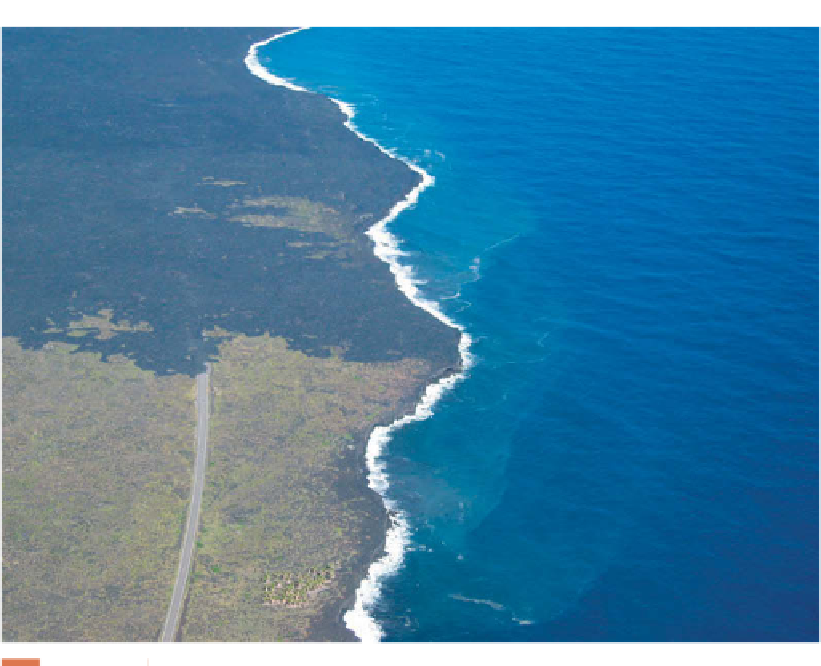Geography Reference
In-Depth Information
Field Note
“Kilauea has been erupting almost cont i nu-
ously since 1983, making it one of Earth's
most active volcanoes. After fl ying over
the volcano in a helicopter and looking
down at the molten lava, I asked the pilot
to take us to the coast where the lava was
spilling into the sea. What we saw provided
a stirring reminder that the environment is
anything but static. Lava had poured across
the road that ran along the coast, and
the confi guration of the coast was being
remade before our eyes.”
Figure 13.4 .
The southeast coast of the Big Island of Hawai'i.
© Alexander B. Murphy.
When Pangaea still was a supercontinent, an Ice
Age cooled the Earth and may have contributed to, if not
caused, the greatest known extinction crisis in the history
of life on Earth. Ice Ages are not uniform cooling events:
surges of coldness and advances of glaciers are interrupted
by temporary warming spells long enough to reverse
much of the glacial impact. By the time the
Pleistocene
epoch opened, less than 2 million years ago, the planet
was in a deep freeze.
The Pleistocene epoch was marked by long
glacia-
tions
and short, warm
interglacials
. When the Pleistocene
glaciations were most severe, permanent ice advanced deep
into the landmasses of the Northern Hemisphere. Plants,
animals, and hominids saw their living space diminished,
their refuges shrunk, their niches unusable. Such glacia-
tions could last as long as 100,000 years, but eventually
a warming spell would arrive, the ice would recede, and
space as well as opportun
left its mark on much of the Northern Hemisphere
(Fig. 13.6). But resourceful humans managed to survive
where their pred
ecessors could not, and there is ample evi-
dence of human occupation in ice-covered Europe, rang-
ing from cave art to tool kits. Even during a glacial advance
brief periods of milder climate emerge. Thus, Figure 13.6
represents a glacial extreme, not the whole picture. So
human communities—fi shing, hunting and gathering, and
using increasingly sophisticated tools (and probably means
of verbal communication)—exploited the milder times to
expand their frontiers, then hunkered down when it got
cold again.
About 73,500 years ago, something happened that
appears to have come close to exterminating human-
ity altogether. A volcano, Mount Toba, erupted on the
Indonesian island of Sumatra. This was not just an erup-
tion: the entire mountain exploded, sending millions
of tons of debris into orbit, obscuring the sun, creating
long-term darkness, and altering global climate. Mount
Toba's detonation could hardly have come at a worse
time. Earth's habitable zone was already constricted
because of glaciation. Anthropologists refer to this event
ity expanded again. A warming
phase of this kind occurred between about 120,000 and
100,000 years ago.
After this warm-up came the most recent glaciation
of the Pleistocene, the
Wisconsinan Glaciation
, which










































